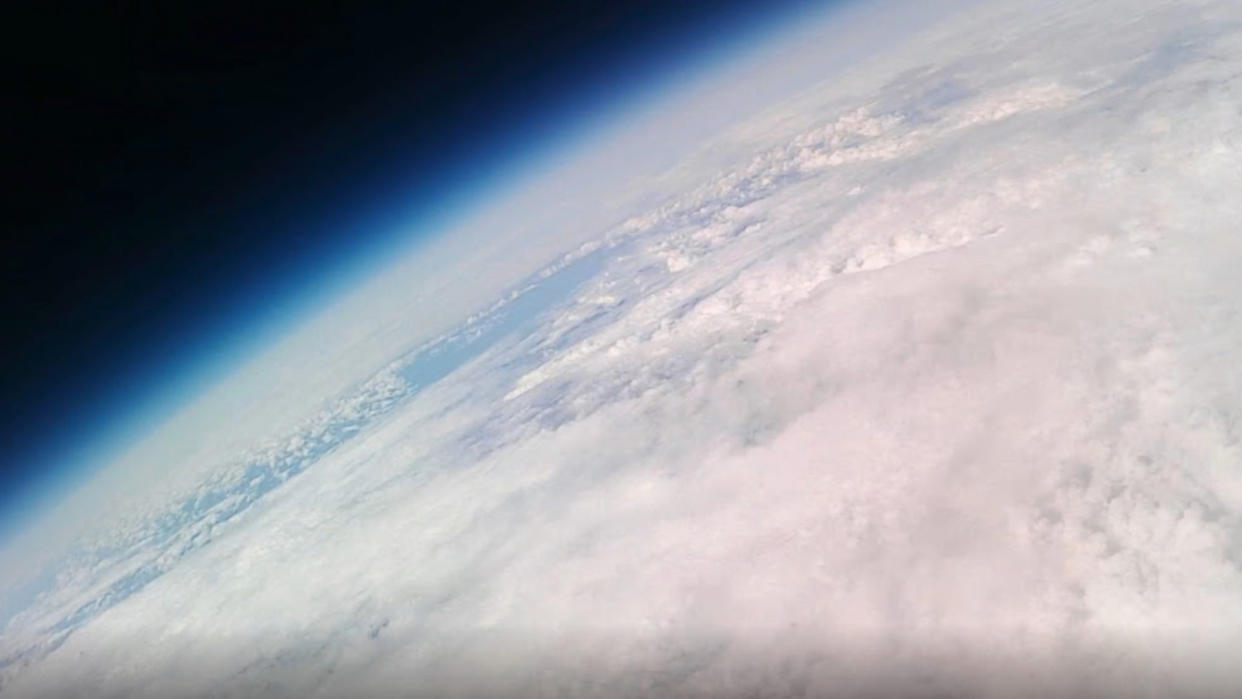High school students set record with stratospheric balloon launch and recovery (photo)

A team from the Astrogazers Club at the Croydon High School for Girls became the first U.K. school group to successfully launch and recover two weather balloons that reached high into Earth's atmosphere, a major achievement for STEM (science, technology, engineering and math) students in the country.
The Astrogazers Club, which included students aged 10 to 16, launched the two weather balloons from the campus of the University of Bath last month. It was their second try: The group's first attempt in late June encountered a technical failure, when high winds tore through ropes on the balloon.
Undeterred, the club's members worked over their summer break to prepare for the latest attempt, which saw the balloons rise to just above 32,000 feet (9,750 meters), well into the stratoshere. The balloons were equipped with sensors to record atmospheric data as well as a camera, which took a stunning photo of Earth from that lofty perch.
Related: Earth's atmosphere: Facts about our planet's protective blanket
The two balloons — named for astrophysicist and former University of Bath Dean of Science Jocelyn Bell-Burnell and the U.K.'s first astronaut, Helen Sharman — flew for more than two hours before making touchdowns as planned in South Oxfordshire.
The entire mission, dubbed "Mission Aspiration" by the club, was planned and carried out throughout by the students, with assistance where necessary from the club's advisor, Arabi Karteepan, the Croydon High School for Girls' Head of Physics, as well as University of Bath professor Cathryn Mitchell and Robert Watson, who helped with regulatory coordination with the U.K.'s Civil Aviation Authority.
"I am absolutely delighted that Astrogazers has become the first girls' school STEM club to achieve two successful weather balloon launches to reach the edge of space," Karteepan said in an emailed statement to Space.com. "They were so happy to see their hard work pay off, and it's especially pleasing that passion for physics and science is higher than ever and the club is now expanding with new members expressing interest in STEM subjects."
RELATED STORIES:
— The top 10 views of Earth from space
— World View to start flying passengers on stratospheric balloon rides in 2024
— Balloon-borne telescope lifts off to study black holes and neutron stars
As for what's next for the Astrogazer's Club, it has already finished a follow-up project called Mission Ivy Satellite, in which the girls created a DIY satellite ground station for weather satellite imagery. Future plans include Mission Innovation, a model rocket launch, and Mission Pegasus, in which the club will attempt to deploy a satellite into low Earth orbit.
"The effect of the successful launches has rippled through the school community and the Girls' Day School Trust — the response has been nothing short of amazing," Karteepan said. "It is fantastic that Astrogazers is now oversubscribed, with a growing waiting list."

